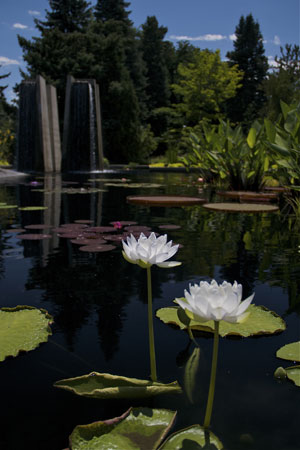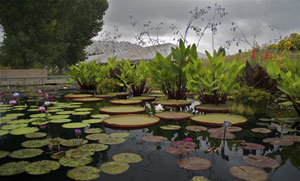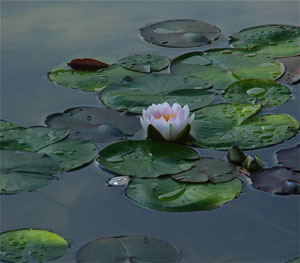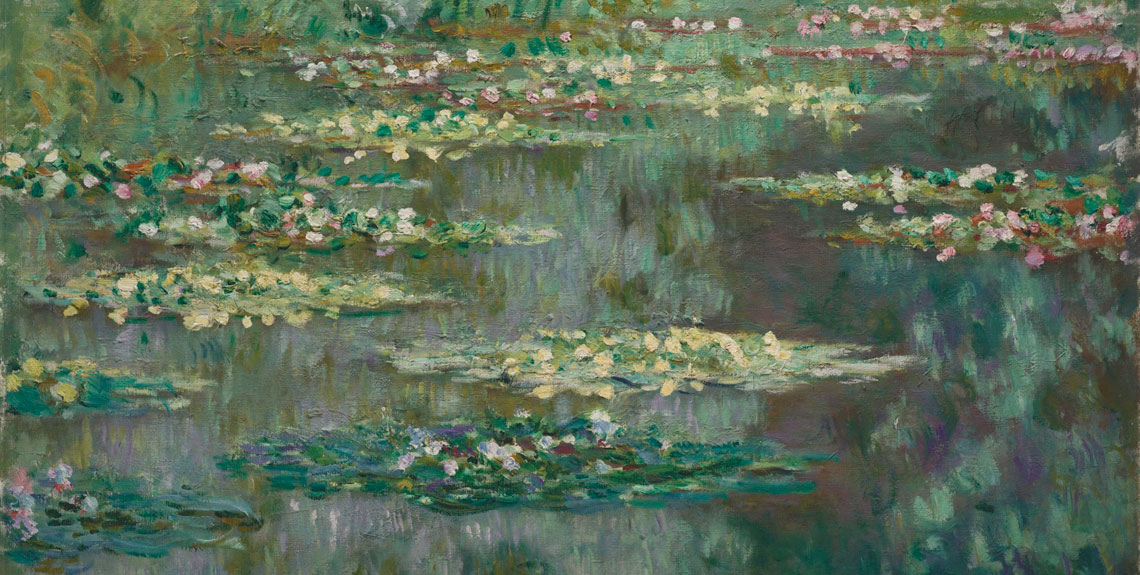Claude Monet’s love of water lilies is well documented in his artistic output. Monet’s pond in Giverny became his universe during the last two decades of his life, providing the subject for more than 300 artworks. He became a master gardener, continually adding new specimens for artistic inspiration. (See Monet's profile in our series of Passport to Paris artist profiles.)
I was curious about this floating plant that captured the imagination and heart of Monet. I reached out to Tamara Kilbane, senior horticulturist for aquatics at the Denver Botanic Gardens (DBG), for a quick lesson on water lilies.
1. What is a water lily?

Tamara Kilbane: Water lilies are floating-leaved aquatic plants in the plant family Nymphaeaceae. These plants grow with their roots anchored in the soil at the bottom of a pond and produce leaves or “pads” that float on the water's surface along with blooms that float on the surface or are held up to a foot above the surface in some varieties. Many species and hybrids can be found throughout the world, from day-blooming hardy water lilies to night-blooming tropicals. The largest water lily (Victoria amazonica) grows in the Amazon river basin of South America and produces leaves that can grow over eight feet across, while the smallest water lily (Nymphaea thermarum) can be found growing in hot springs in Rwanda and has tiny leaves and blooms measuring less than a half inch in diameter.
2. How can they grow in water?

Kilbane: Water lilies have several adaptions that allow them to grow in water. Leaf and flower stems can grow rapidly in response to fluctuations in water levels while the leaves themselves have stomata (small pores that allow for the exchange of gases such as oxygen and carbon dioxide) arranged on the upper surface of the leaf as opposed to the underside of the leaf as is found in most plants that grow on land. The plants do not need to put energy into producing sturdy stems, instead allowing the water column to support and keep them buoyant. The canopy of floating leaves is designed to soak up the maximum amount of sunlight in order to allow the plant to photosynthesize. Fibrous root systems take up nutrients from the soil at the pond bottom, while hardy water lilies produce rhizomes in the soil that store energy for the plants.
3. Are the plants today the same as rom Monet’s time?

Kilbane: A Frenchman named Joseph Latour-Marliac is considered the "father of water lily hybridizing," having created over 100 new hybrids of hardy water lilies in the late 1800s to early 1900s. In fact, it has been documented that Monet purchased many of the water lilies for his garden at Giverny from Marliac's nursery. Many of these hybrids are still available today, although many new hybrids have been created since that time as well.
4. What do you have to do to grow these beauties in Colorado?

Kilbane: Hardy water lilies are fairly easy to cultivate here in Colorado. At DBG, we plant our hardy lilies in solid plastic containers that are about six inches deep and 16 inches wide. We grow the lilies in ponds that are 20 inches deep and leave the plants at the bottom of these ponds for the winter months. As long as the rhizomes do not freeze, most hardy water lilies will survive Denver winters. The plants require full sun and still water to grow and bloom best, along with biweekly fertilization during the growing season. In the spring, the plants are divided and repotted with extra divisions sold in the spring plant sale.
5. People (not to mention Monet) love these plants. Any idea why they are so appealing to the public?
Kilbane: I think that people are drawn to water lilies and water gardens because of the feelings they evoke. Sitting beside a water garden can bring a sense of calm to an otherwise hectic day, a peaceful tranquility that can be difficult to find in today's world. There is also a sense of awe that I see in our visitors as they admire the number of varieties and range of colors and forms that exist in this plant family.
What classes or courses do you offer at the Gardens for people who want to learn more?
Kilbane: The gardens offer docent led tours throughout the summer months. The Colorado Water Garden Society is another great source of information. The society offers an event in the spring called "Get Wet" as well as an annual "Water Blossom Festival" each August at DBG which includes tours of the water gardens, plant giveaways, and an educational lecture.
Image credit: Claude Monet, Waterlilies or The Water Lily Pond, 1904. Funds from the Helen Dill Bequest.
Photographs by Tamara Kilbane.

